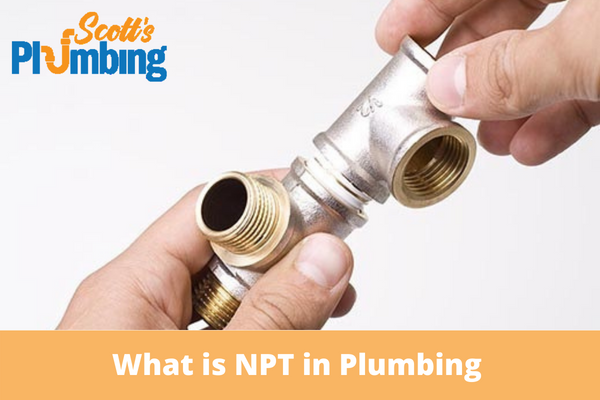Have you ever ordered the incorrect pipe size and wondered why? You measured the threads on the pipe. You measured it several times before placing your order, but when it arrived and you went to use the pipe, it didn’t fit. Pipe thread measurement appears straightforward, but it can be deceivingly complex. A few changes in how you measure pipe threads can make all the difference in terms of saving time and frustration.
The American National Pipe Tapered Thread (NPT) is the most well-known and commonly used connection in which the pipe thread serves as the mechanical joint and the hydraulic seal.
What Exactly Are NPT Fittings?
NPT connections seal pipes for fluid and gas transfer. For low-pressure applications, they are available in iron and brass. For higher-pressure applications, they are available in carbon and stainless steel. The nominal pipe size is obtained by physically measuring the thread diameter and subtracting 1/4′′. NPT is a tapered thread standard used on pipes and fittings in the United States for over a century.
Thread deformation, a metal-to-metal sealing design in which the connector threads form together, is used for NPT connections. This style is best suited for one-piece applications. Due to thread wear caused by deformation, it is not recommended for links that will be assembled and disassembled frequently.
NPT Characteristics:
-The angle between the taper and the pipe’s center axis is 1° 47′ 24″ (1.7800°)
-Root and crest truncation is flat
-60° thread angle
-Threads per inch are used to measure pitch (TPI)
Disadvantages of Using NPT Fittings:
- It can be prone to port expansion or cracking from over-tightening
- This can make it more difficult to properly orient shaped connectors.
- The thread lubricant required can cause system contamination.
- Are not suitable for the highest pressures
- Sealing performance decreases rapidly with re-assembly, and larger sizes are more prone to leaking because of the leak path size.
Advantages of Using NPT Fittings:
- Are readily available
- Come in a large variety of sizes, shapes, combinations, and materials
- Widely used and well known
- Offer simple assembly without flaring of tubes, using sleeves, or introducing seals or o-rings
NPT-Related Leakage Problems
NPT threads were initially designed for plumbing (60 psi) rather than hydraulic systems. They have, however, been used in hydraulic systems for many years. Pipe threads are not recommended for high-pressure applications because they leak more than any other type of connection. As previously stated, NPT threads require a sealant to be applied to the threads before assembly.
NPT threads leak more frequently than Dryseal threads, but both thread types will leak if under-tightened. Although no general tightening standard has been established, keep in mind that tightening requirements vary depending on the re-use and/or type of sealant used. It’s also worth noting that overtightening can cause the female port to crack.
If you have questions about NPT or other types of pipe threads, please contact Scott’s Plumbing immediately. We can assist you in determining which type of threading is right for your application. Our plumbers are well-versed in all types of plumbing, from pipe threads to compression fittings. We offer a wide variety of products that will help you with your next plumbing project.



